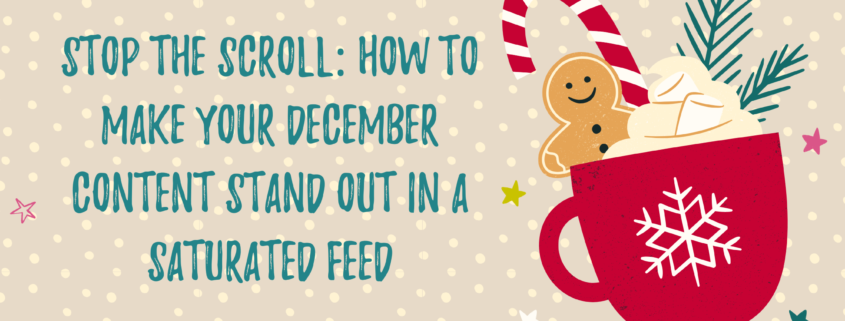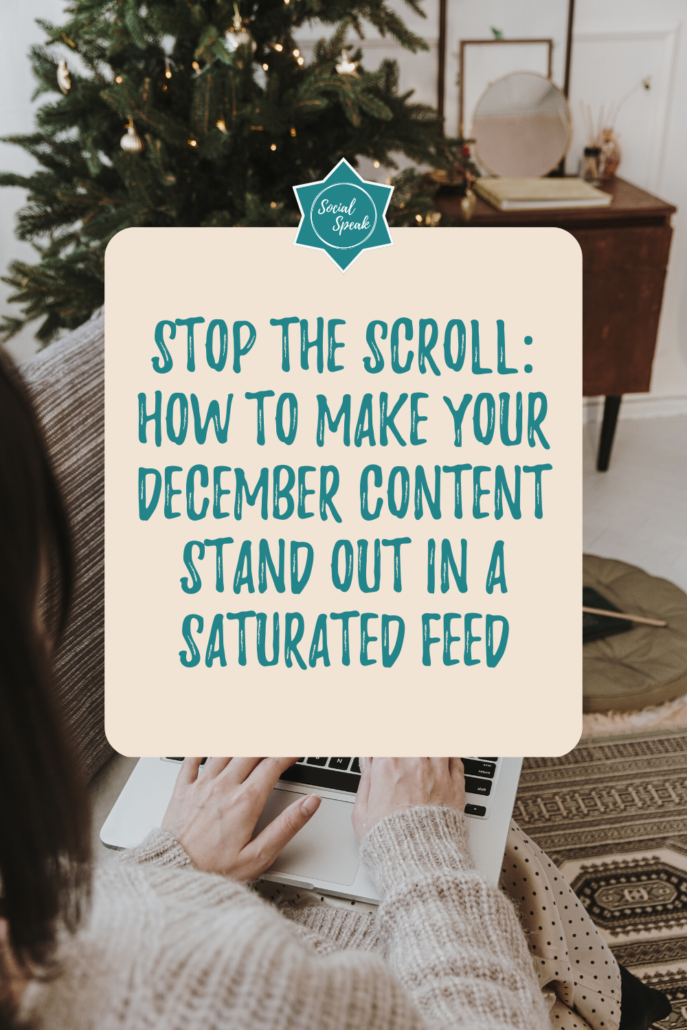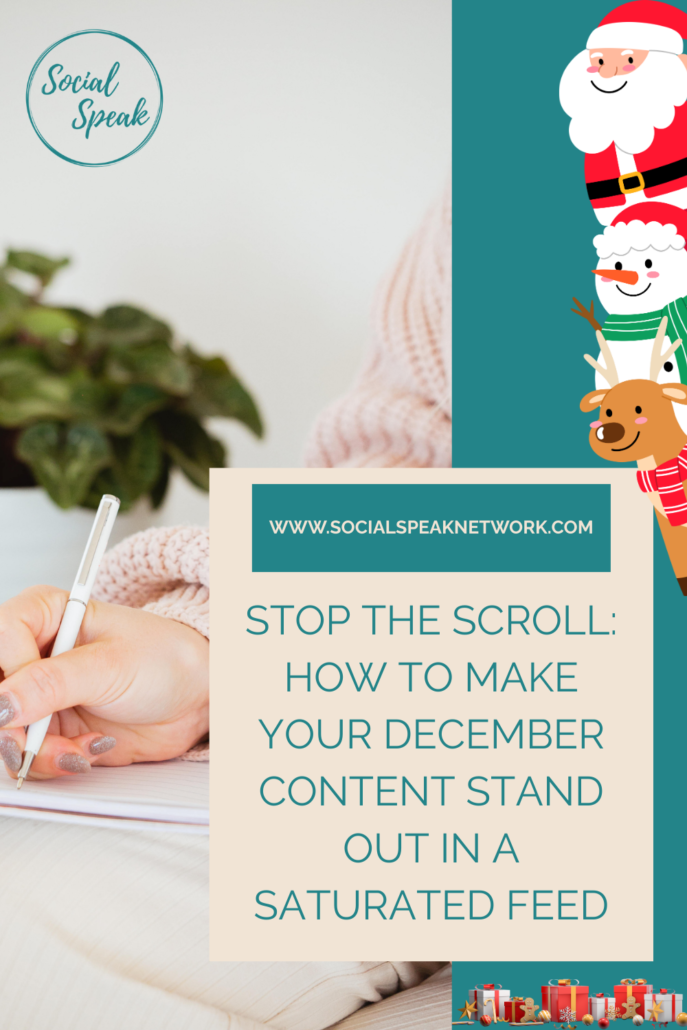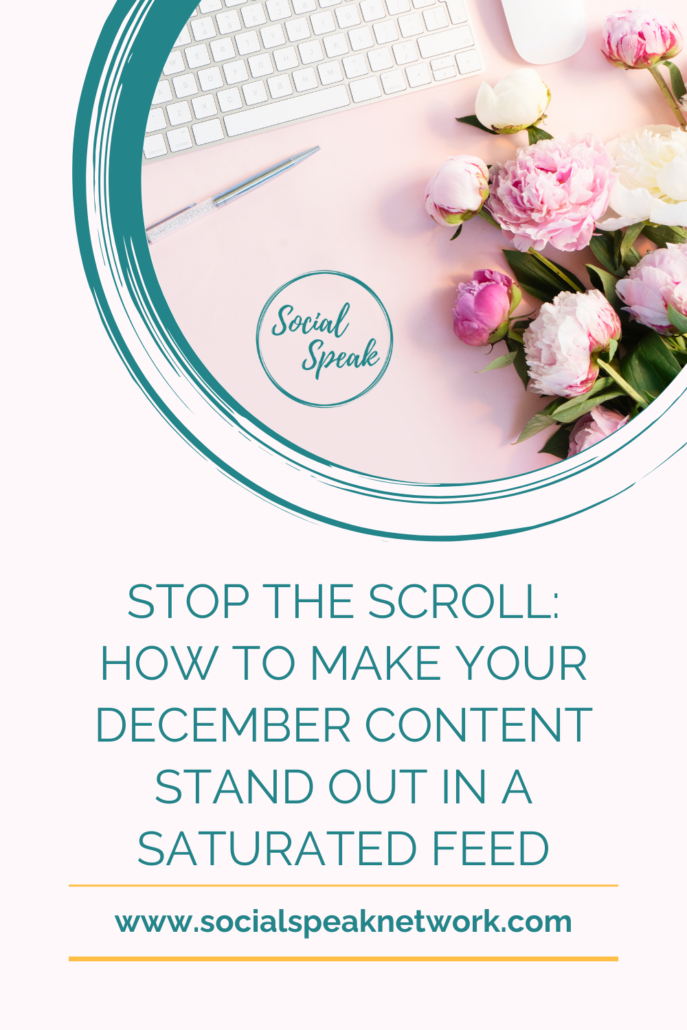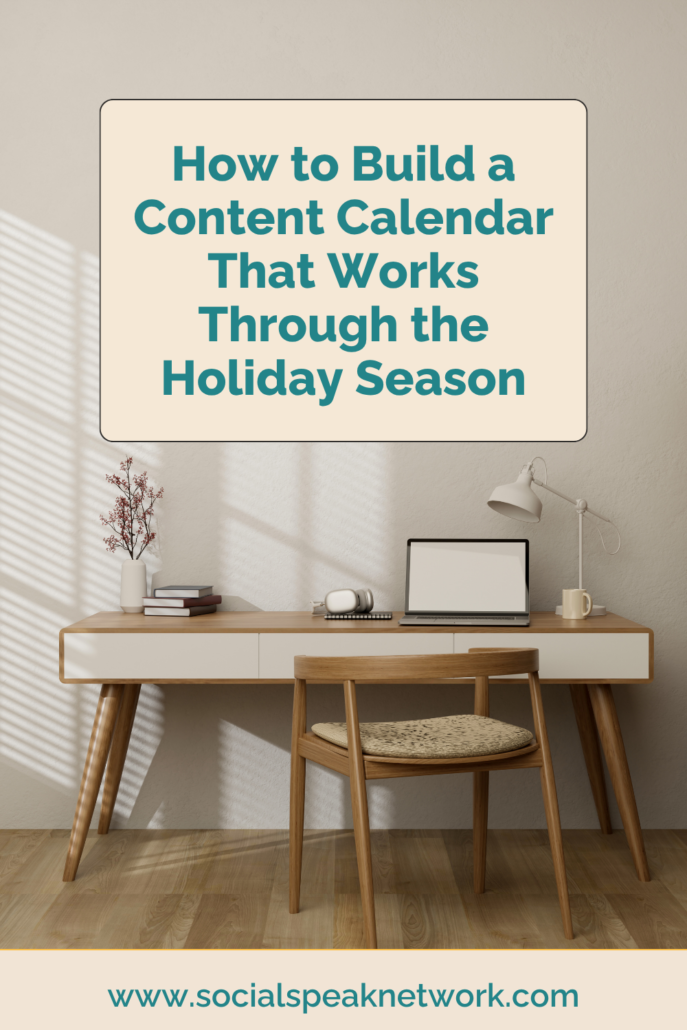December is one of the busiest times of the year, not just in stores, but online. Everyone is online, selling, and posting more content than usual.
Holiday deals flood your feed. Creators release “year-end” posts. Families share travel photos. Major brands push high-budget holiday campaigns. And in the middle of all this noise… small businesses are expected to keep up.
But here’s the good news: You don’t need to outpost, outspend, or out-design everyone else.
You just need to create content that makes people stop scrolling, even for a moment, and pay attention.
In this article, we’ll walk through the essential strategies that help small businesses stand out online during the holiday rush, without feeling overwhelmed or burning out.
The Psychology of December Scrolling Behavior
Before you create content for December, you need to understand what’s happening on the other side of the screen. The holiday season changes how people use social media. It’s not just how much they scroll, but why they scroll, what captures their attention, and what makes them stop.
When you understand these patterns, you can create content that feels relevant, timely, and impossible to ignore.
1. People scroll faster (and pay less attention)
With holiday errands, events, travel, and family activities filling their schedule, users skim their feeds at lightning speed. They won’t stop for long captions, slow hooks, or anything that looks generic.
Content must communicate value within seconds, ideally within the first line or first frame. The faster your content delivers clarity, emotion, or usefulness, the more likely it is to stop someone mid-scroll.
2. They buy more, but only from content that helps or resonates.
Even though people scroll faster, their buying intent is significantly higher. Shoppers are actively looking for ideas, solutions, and recommendations. This means the most effective content solves a problem quickly or guides them toward a decision.
3. Emotion drives decisions.
December is an emotional month. Nostalgia, gratitude, generosity, and reflection naturally influence how people interact with content.
Posts that tap into real stories create deeper engagement. Emotional relevance is what turns quick scrollers into active participants. It also fosters trust at a time when people are deciding where to spend their money and which brands are worth supporting.
Proven Content Strategies to Help You Stand Out
With competition at its peak, posting randomly won’t cut it. These strategies are grounded in real data and consumer behavior, and they’re designed to help small business owners stand out even without a big budget.
1. Lead With High-Contrast, Scroll-Stopping Visuals
When users scroll faster, your visuals have to work harder. High-contrast colors, strong focal points, and pattern-breaking imagery force users to pause for a second, and that second is everything. Think less about making your feed “pretty” and more about creating content that interrupts the scroll.
A bold color overlay, a strong headline on the thumbnail, an unexpected image, or even a raw behind-the-scenes photo can outperform overly polished graphics.
2. Create Value-Based Content (Not Just Promotions)
The holiday season is saturated with sales. If your content becomes one long commercial, your audience will tune you out. What performs best in December is content that helps first and sells second.
Gift guides, how-to posts, quick tips, checklists, and “what to buy when you’re short on time” guides position you as the trusted expert rather than another brand begging for attention. When you make your audience’s decisions easier, they naturally choose you when it’s time to buy.
3. Lean Into Emotion and Human-Centered Stories
December is an emotionally charged month, and people respond more deeply to content that feels genuine and personal. This is the time to spotlight the humans behind the brand — the founder, the team, and the customers who support you.
Share behind-the-scenes moments, appreciation posts, meaningful milestones, or stories about the impact your business has made this year. These posts create the emotional resonance that algorithms notice and customers remember.
4. Short, Fast-Paced Videos Perform Best
Short-form video dominates in December because it aligns with how people consume content this season: it’s quick, visual, and to the point. Videos under 15 seconds consistently win more attention. And the best part? They don’t need to be perfect.
Raw, authentic videos outperform heavily produced ones because they appear more genuine and trustworthy. If you can deliver value in the first three seconds, you’ve already outperformed most of your competition.
5. Increase Engagement With Interactive Content
People love interacting with content that invites them to participate. Polls, quiz-style posts, question boxes, and countdowns naturally boost engagement, which in turn increases algorithmic reach.
In December, when feeds are saturated, every interaction counts. Interactive content encourages users to stop, think, and respond, making your posts more memorable and more visible. When in doubt, ask a question or invite your audience into the conversation.
December Content That Converts: What to Post (With Examples)
The content that performs best this month has two key qualities: it delivers value instantly and aligns with what shoppers are actively looking for.
Below are highly effective, research-backed content ideas business owners can use throughout December, with examples for easy execution.
1. Holiday Gift Guides
Gift guides are one of the most powerful formats because they solve a real customer problem:
“What should I buy for ____?”
You can create guides for different audiences:
- “Gift Ideas Under $30”
- “Gifts for Busy Moms”
- “Best Gifts for Coffee Lovers”
- “Last-Minute Gifts You Can Pick Up Today”
These posts save your audience time, reduce decision fatigue, and position your brand as the go-to choice.
2. “Most-Loved Products of the Year”
December is a month of reflection, and customers love knowing what others already trust.
Highlighting your top products or services creates instant social proof.
- “Our Top 5 Bestsellers of 2025”
- “The Services Our Clients Book the Most During the Holidays”
- “What Our Customers Couldn’t Get Enough Of”
This format boosts both credibility and curiosity, the two ingredients that lead to sales.
3. Customer Story of the Month
When audiences feel emotionally connected, they’re more likely to make a purchase. Feature a heartfelt customer story, transformation, or testimonial.
- A gift shop sharing a story of a customer who found a meaningful present for a loved one
- A service provider showcasing a client win or success milestone
- A boutique highlighting a repeat customer’s favorite holiday picks
Stories humanize your brand and remind people that real customers trust you.
4. Behind the Scenes
People love peeking behind the curtain. It makes your brand feel honest, relatable, and trustworthy.
Here are some behind-the-scenes content ideas:
- Packing holiday orders
- Setting up your holiday menu or display
- Team members share their favorite part of the season
- Sneak peeks of limited-edition items
- A message from the founder about the year’s journey
These posts are simple but powerful. They humanize your brand and highlight the care you put into every order or service.
5. “Holiday FAQs”
Customers have the same holiday questions every year. Answering them upfront reduces friction and increases conversions.
Here are some questions you might want to address:
- “When is the last day to order for Christmas delivery?”
- “What’s your holiday return policy?”
- “Can I buy gift cards?”
- “Do you offer bundle deals or gift sets?”
Clear answers turn hesitant shoppers into confident buyers.
Your Content Doesn’t Need to Be Perfect, It Just Needs to Matter
December is loud, crowded, and competitive, but that doesn’t mean small businesses are at a disadvantage. In fact, this is the season when authenticity and value matter more than perfectly produced content or the biggest ad budget.
Your audience isn’t looking for perfection. They’re looking for connection, clarity, and help.
When you share helpful tips, show the face behind the business, highlight customer stories, or express gratitude… You give people a reason to pause. And in a month where everyone is competing for attention, earning that pause is everything.
The businesses that win aren’t the ones posting the most. They’re the ones posting content that feels relevant, human, and useful.
If you want to build a December strategy that cuts through the noise and turns casual scrollers into customers, we’re here to help.
Schedule a free consultation with us today, and let’s plan content that carries your business through the holidays and well into the new year.

